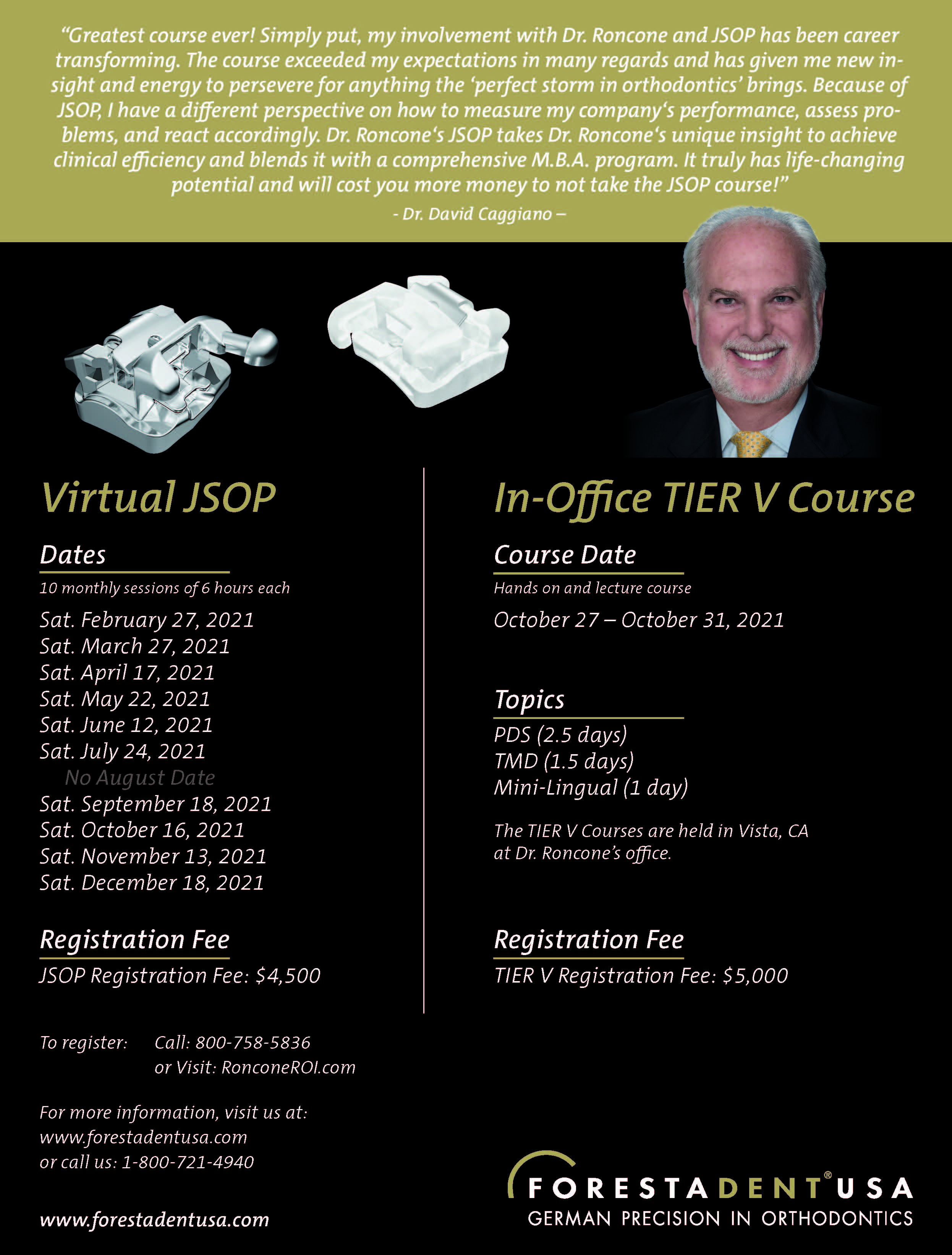Serving on the editorial board of the Journal of Clinical Orthodontics since 1991 and as Editor-in-Chief since 2002—almost 20 years now—has unquestionably been the highlight of my professional life and orthodontic career. As a result of my service to JCO, I have been invited to speak all over the world, with the notable exception of Africa, and have made friends with what seems like hundreds of clinicians in other countries. There are few things more exciting for an orthodontist than to be invited to speak at a congress in a different land. Even an Africa trip was in the works until COVID-19 essentially shut down global travel. But like good times, all bad times must eventually come to an end, and I look forward to resuming my world tour as soon as the pandemic allows.
I always appreciate learning the history of any region I visit, experiencing the local customs, and, of course, sampling the cuisine. As an orthodontist, I particularly enjoy studying the subtle nuances of professional practice in different countries. For example, a close friend and former classmate of mine is an orthodontist in San José, Costa Rica. We trained together under the tutelage of the late, great Dr. J. Daniel Subtelny. Working side by side, day to day, for more than two years, our diagnostic and treatment patterns became virtually identical. Over the intervening 30 years, however, subtle differences have arisen—some due to simple personal preference, but others undoubtedly influenced by the practice norms and patterns of our home countries. Both of us were always able to achieve high-quality results, but our methods inevitably diverged.
Similar articles from the archive:
- THE EDITOR'S CORNER What Everyone Else Is Doing December 2020
- THE EDITOR'S CORNER The State of the Specialty October 2014
- THE EDITOR'S CORNER The State of the Profession January 2009
This issue of JCO includes an article by Drs. Maïlys Balteau, François Lefebvre, Daniel Kanter, Delphine Wagner, and Yves Bolender that explores how the practice of orthodontics differs between France and the United States. American readers will quickly note that French orthodontists recommend starting orthodontic treatment an average two years younger. Conversely, French orthodontists treat a much lower percentage of adults than their American counterparts do. A greater percentage of their cases are treated with lingual appliances, while Americans use more clear aligners.
Dr. Balteau and colleagues point out many other subtle and not-so-subtle differences between orthodontic practice in the two countries. I don’t want to spoil the ending by spelling them all out here, but I found the entire study remarkably interesting. This exercise in comparison is rewarding not just for curiosity’s sake, but as a source of learning and exploration of how things might be done differently and, perhaps, better, enabling us to improve our own practices.
Dr. Balteau initially approached us with a request to emulate the questionnaire and methodology of the JCO Study of Diagnosis and Treatment Procedures, which is considered the global standard among orthodontic surveys, and we were glad to help. It would not take an enormous effort for orthodontists in other parts of the world, like my classmate in Costa Rica, to compare their practices to those in both France and the United States. If we receive enough studies like this, we could develop a statistical comparison of diagnostic and treatment techniques around the world, thus allowing for a global cataloging of best orthodontic practices. I would be happy to assist any of our international readers who are interested in conducting and reporting such surveys; just drop me an e-mail at editor@jco-online.com. Special thanks to Dr. Balteau and her colleagues for this groundbreaking report.
RGK



COMMENTS
.